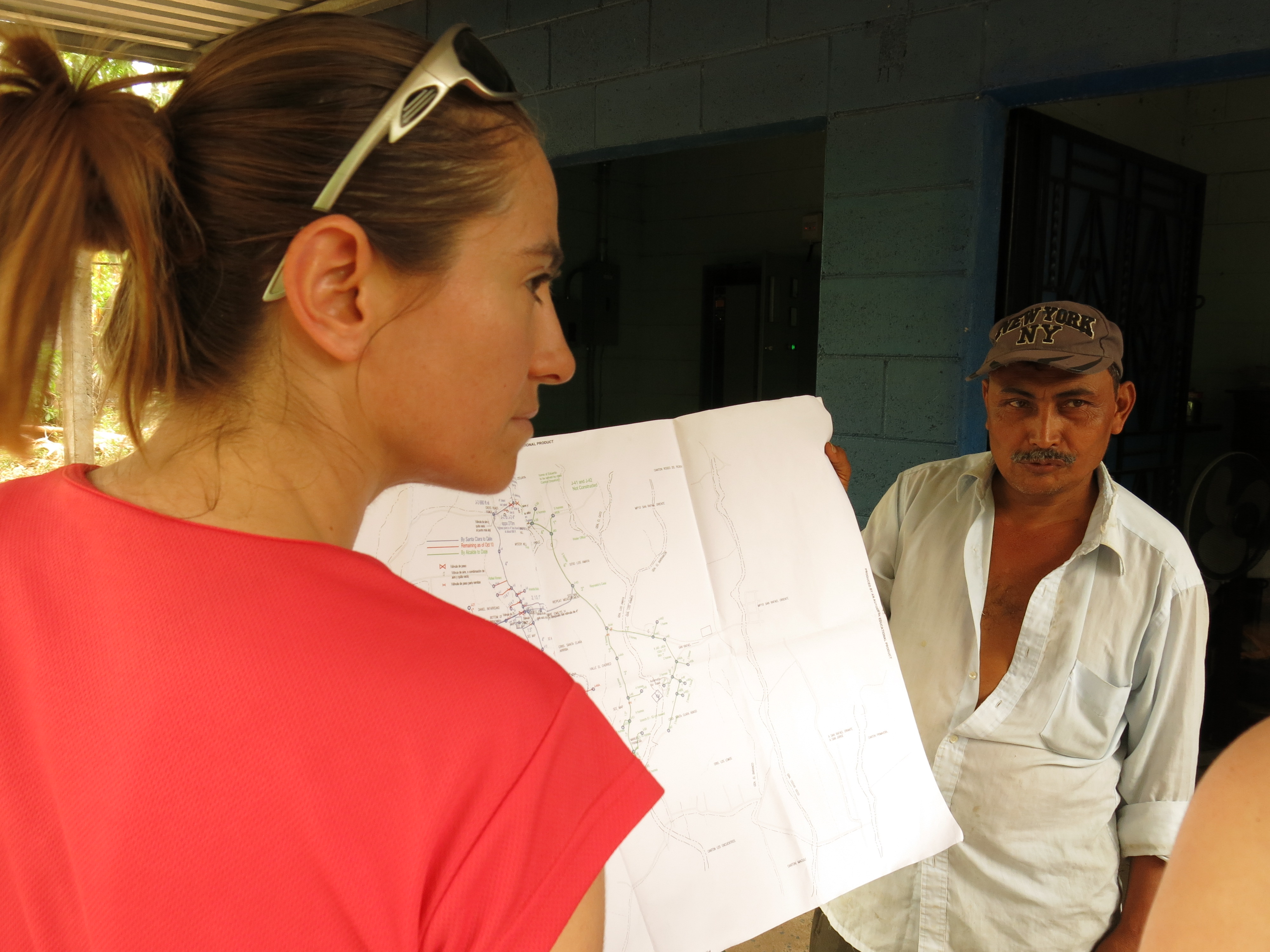Last September, EWB-DC returned to Santa Clara, El Salvador. EWB-DC was represented by Gabe, Eric, Iliana, and Jess, all of whom traveled to Santa Clara for the first time. The six day visit was the first trip to the community since early 2015. While the main objectives of the trip were to conduct monitoring and evaluation of the water system, the team also focused on reconnecting with the community and performing a general needs assessment for future projects.
The team met with the community’s water committee to discuss the status of the water system that was implemented back in 2012. Overall, the community has done a great job of maintaining the system, and has been raising the funds needed for repairs and replacements. As of the trip, three quarters of the community had been connected to the water system.
At the site of the water pump, found the water storage tanks to be in good condition. Water quality tests at the location of the water pump as well as post-treatment showed no presence of E. Coli and good levels of chlorine, acidity, and water hardness.
With Iliana and Jess acting as translators, the team met with community groups to discuss issues in the community to try to identify future project ideas. A group of women from the community, la Asociación de Mujeres para el Desarrollo Comunitario para un Mejor Mañana (The Association of Women for Community Development for a Better Tomorrow), discussed issues such as the need for better transportation and a more reliable health clinic system. Another group from the local church also brought up transportation needs as well as issues with inconsistent electrical service.
While visiting a local school, the team observed multiple quebradas (drainage beds) along the road. During periods of rainfall in the surrounding watershed, water flows through these quebradas and disrupt traffic along the road. At the time of the trip, the water level was only a few inches deep, but David, an in-country contact, explained that the water levels rose dramatically during storms. The largest observed quebrada was roughly 250 feet across. Due to the danger, students are dismissed early from school when it rains to ensure they arrive home safely
The team also found time to have fun with the members of Santa Clara. They gave lessons to young students about hydrology and the water system one day, and they played softball with some of the members of the community.
Thanks to Tim and Carlos for their help in putting together this post!

